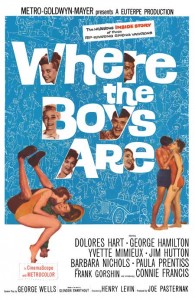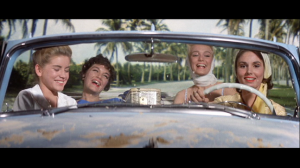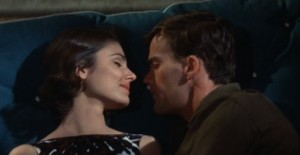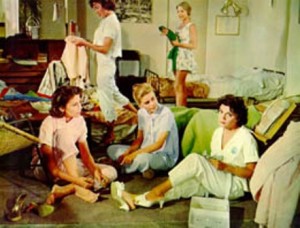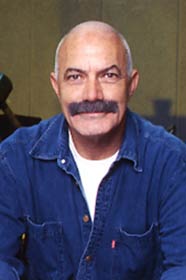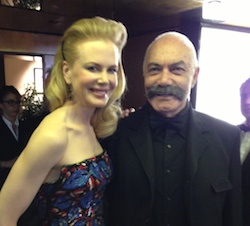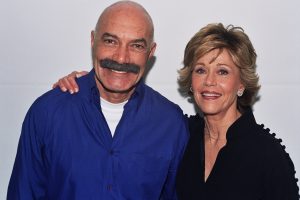Four young and beautiful starlets, Yvette Mimieux, Paula Prentiss, Connie Francis, and Dolores Hart appear in Where the Boys Are, an iconic Spring Break picture, which was made in 1960 as star vehicle for the popular singer Francis.
Over the years, the movie, a classic coming-of-age, written by George Wells, based on the novel by Glendon Swarhout, has become iconic, eve classic for a variety of reasons. In some milieus, it’s considered high camp, unintentionally, perhaps due to its sharply uneven dialogue that veers from the serious, existential, and pretentious all the way to the naïve, fake and downright silly.
Nominally, it’s a tale of teen romance of four attractive students who take off from Midwest college on the wintry annual spring break to the hot sunny and alluring Ft. Lauderdale, Florida–where the boys are.
The feature begins with a solemn voice-over narration of how dreary campus life is in the winter, accompanied with imagery of winds, snows and hail.
However, once the girls land in their destination with a nice convertible, there are plenty of parties, booze, romantic courtships and sex to keep them busy and happy. There are also occasions for Connie Francis to perform several songs.
Sweetheart Merritt Andrews (Dolores Hart) and Ryder Smith (George Hamilton) get together, while Tuggle Carpenter (Paula Prentiss) expresses her comedic talents with Jim Hutton (father of Timothy).
Angie (Connie Francis) sings the hit title song, which sold millions of copies,
Only Melanie Coleman (French-born blonde Yvette Mimeux) becomes the victim of the excessive good times—a date rape before the term was even invented.
Aimed at the booming teen market of the late 1950s and early 1960s (Elvis Presley and his movies were also popular at the time), “Where the Boys Are” was a huge commercial success, at once exploiting, benefiting from, and promoting the title song “Where the Boys Are,” which was sung by Connie Francis in the title credits sequence, and whose melody accompanies many of the scenes. (See below).
Released in the wintertime, the movie is credited with inspiring thousands of additional American college students to head to Fort Lauderdale for their annual spring break in what has become a uniquely American ritual. It’s a popular Hollywood movie whose text and especially subtext should be taken more seriously than it has been, because they reflects the fears and anxieties—the zeitgeist—of the era.
For starters, it was one of the first teen films to explore adolescent romance and courtship, and the changing sexual mores and attitudes among American college youths at a crucial time, just before the climate of opinion began to change in the 1960s. It’s revealing that Doris Day, the “eternal virgin,” well into her thirties, was America’s top female star at the time.
In the first scene, set in in classroom at a Midwestern university, Merritt Andrews (Dolores Hart), the smart, rational, and assertive leader of the quartet, expresses the bold (and “appalling,” from the point of view of the conservative female teacher) the opinion that premarital sex might be something young women should experience.
Her speech bears effects, eventually leading to the insecure Melanie Tolman’s loss of virginity soon after the young women arrive in Ft. Lauderdale.
Tuggle Carpenter (Paula Prentiss), on the other hand, seeks to be a “baby-making machine,” desperately looking for the right man to marry her.
Angie (Connie Francis), the least developed character, rounds out the group as a girl who is clueless when it comes to romance. It feels as if the filmmakers (both writer and director Levin) did not know exactly what kind of role would fit Francis.
Thus, contrary to expectation, Francis did not become a major screen personality after this picture—for a variety of reasons.
In the course of the tale, each one of the girls finds her beliefs and values challenged, contested–and changed. Merritt, a freshman, meets the suave rich-boy Ivy Leaguer Ryder Smith, a senior at Brown, and realizes she’s not ready yet for sex. Melanie discovers that Frank, a boy from Yale who she thought loved her was only using her for sex. When Frank is busy, he sends his chum as a substitute to Melanie’s motel, and in an off-screen scene, the later assaults her (Remember this was 1960).
Tuggle quickly places her attention on the goofy “TV” Thompson, a junior at Michigan State, who, for one things, is taller than she is. (Prentiss was very tall).
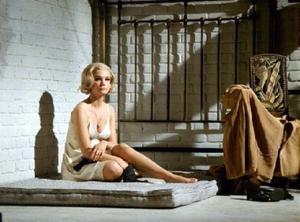 The film’s weakest scenes depict Thompson’s infatuation with an older, sexually ripe woman, named Lola Fandango (Barbara Nichols, channeling Jayne Mansfield), who works as a “mermaid” swimmer-dancer in a local bar, but becomes disillusioned when he becomes enamored of the.
The film’s weakest scenes depict Thompson’s infatuation with an older, sexually ripe woman, named Lola Fandango (Barbara Nichols, channeling Jayne Mansfield), who works as a “mermaid” swimmer-dancer in a local bar, but becomes disillusioned when he becomes enamored of the.
And in another unconvincing subplot, Angie stumbles into love with an eccentric jazz musician Basil, who simply can’t see without his glasses on; Basil offers the broad comic relief.
The melodramatic climax occurs when Merritt, Tuggle and Angie discover Melanie in a distressed state after an encounter with one of the “Yalies” she had pursued throughout their vacation. After he sexually assaults her, Melanie leaves the motel with a torn dress. Placing a desperate call to Merrit, she walks desperately and dangerously down the street, disregarding the busy traffic. Melanie is sent to the hospital, surrounded with love and support by her mates.
Trying to balance “Girls Just Wanna Have Some Fun” with a heavy morality play, the tale dwells on the life lessons that each girl learns. Thus, the quartet of friends realizes the potentially serious consequences of their individual conduct and resolve to act in a more responsible and mature manner.
On the surface, most of the tensions and conflicts are resolved with a neat closure. Melanie recovers in the hospital while, Merritt sacrifices plans and stays on to look after her.
Ryder then declares his serious goal to maintain a long-range, long-distance relationship with Merritt, which goes beyond that single Spring Break. In the last image, a beautiful sunny day, the duo meets on the beach and holding hands they walk together into the horizon
The movie features cool, modern jazz, epitomizd by such seminal figures as Dave Brubeck, Gerry Mulligan, and Chico Hamilton, then in the vanguard of the college music market, features in a number of scenes with Basil. Called “dialectic jazz” in the film, the original compositions were by Pete Rugolo.
MGM, which produced the picture, exploited the success of Connie Francis, a top American female recording star and a member of the MGM Records roster. Francis had asked Neil Sedaka and Howard Greenfield, to write hit songs for her, including a “Where the Boys Are” title song.
Reportedly, Sedaka and Greenfield wrote two potential title songs for the film, but producer Joe Pasternak passed over the song Francis and the songwriting duo preferred in favor of a movie theme. Although it peaked at # 4 in the US, the song of “Where the Boys are” became Connie Francis’s signature tune
As noted, besides the theme song, Francis sang another Sedaka-Greenfield composition in the picture: “Turn on the Sunshine.” The soundtrack also features “Have You Met Miss Fandango,” sung by Barbara Nichols, featuring music by Victor Young and lyrics by Stella Unger.
Most of the film’s actors and actresses went on to great acting careers in film, stage, and TV in the 1960s.
The film won Laurel awards for Best Comedy of the Year and Best Comedy Actress for Paula Prentiss, arguably the most gifted of the quartet of girls. Due to their on-screen chemistry and matching heights, Prentiss and Jim Hutton were later paired in several comedies. (Jim Hutton, who died young, is the father of Timothy)
Dolores Hart surprised many, when she left Hollywood behind to become a Benedictine nun in 1963. Connie Francis did not succeed in becoming a legit actress with a viable screen career. Mimieux was popular for several years, but never fulfilled the earlier promise.
End Note
“Where the Boys Are ’84, a decent remake, was released in 1984 by TriStar.
Cast
Dolores Hart as Merritt Andrews
Paula Prentiss as Tuggle Carpenter
Yvette Mimieux as Melanie Tolman
Connie Francis as Angie
George Hamilton as Ryder Smith
Jim Hutton as TV Thompson
Rory Harrity as Frank
Frank Gorshin as Basil
Chill Wills as Police Captain
Barbara Nichols as Lola Fandango
| Where the Boys Are | |
|---|---|

|
|
Credits:
Directed by Henry Levin
Screenplay by George Wells, based on Where the Boys Are (1960 novel)
by Glendon Swarthout
Produced by Joe Pasternak
Cinematography Robert J. Bronner
Edited by Fredric Steinkamp
Music by Score: George Stoll
Jazz: Pete Rugolo
Songs: Neil Sedaka (music), Howard Greenfield (lyrics), Color process Metrocolor
Production company: Euterpe Productions
Distributed by Metro-Goldwyn-Mayer
Release date: December 28, 1960
Running time: 99 minutes
Budget $2 million (equivalent to $14 million in 2020)
Box office $3.5 million (US rentals) (equivalent to $23.9 million in 2020)
